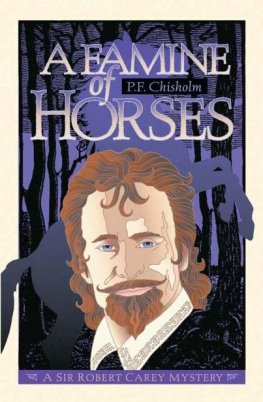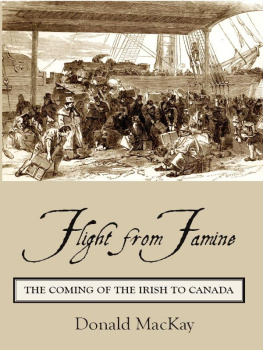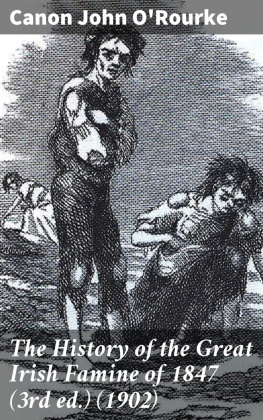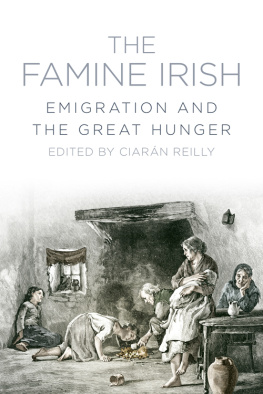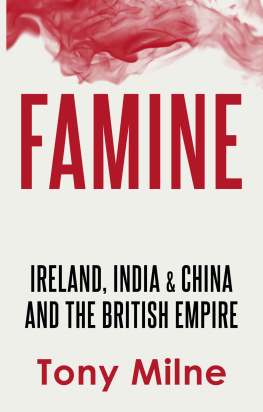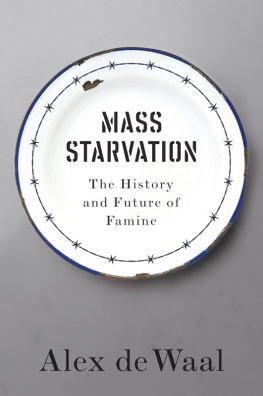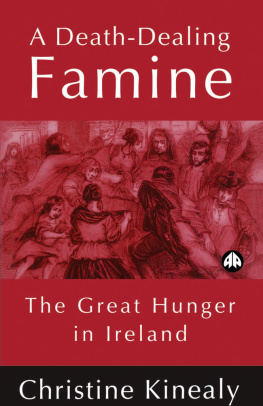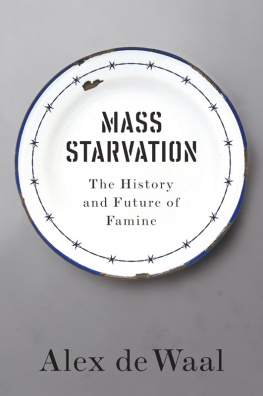FAMINE
FAMINE
A Short History
Cormac Grda
Princeton University Press Princeton and Oxford
Copyright 2009 by Princeton University Press
Published by Princeton University Press, 41 William Street,
Princeton, New Jersey 08540
In the United Kingdom: Princeton University Press, 6 Oxford Street,
Woodstock, Oxfordshire OX20 1TW
press.princeton.edu
All Rights Reserved
Second printing, and first paperback printing, 2010
Paperback ISBN: 978-0-691-14797-0
The Library of Congress has cataloged the cloth
edition of this book as follows
Grda, Cormac.
Famine : a short history / Cormac Grda.
p. cm.
Includes bibliographical references and index.
ISBN 978-0-691-12237-3 (hardcover : alk. paper) 1. Famines
eISBN 978-1-400-82989-7
History. 2. Food supplyHistory. I. Title.
HC79.F3O57 2009 363.809dc22 2008032488
British Library Cataloging-in-Publication Data is available
R0
For David, Joel, Louis, and Peter
Figures and Tables
FIGURES
TABLES
Acknowledgments
THIS BOOK BEGAN AND ENDED IN PRINCETON, New Jersey. Without the time off permitted by stays at the Shelby Cullom Davis Center in 20034 and the School of Historical Sciences of the Institute of Advanced Study during the fall semester of 2007, the book would simply not have been possible. My colleagues in the School of Economics, University College Dublin, were also supportive throughout.
I am grateful to the following friends for reading previous drafts, and their advice and support: Paddy Geary, Bill Jordan, Liam Kennedy, Joel Mokyr, Mire N Chiosin, Pl Duibhir, Fionn Grda, Peter Solar, David Stead, Brendan Walsh, and Stanley Waterman. Several othersincluding Tom Bernstein, Lance Brennan, Tim Dyson, Stanley Engerman, Morgan Kelly, Gerald Mills, Karl-Gunnar Persson, Carl Riskin, Eric Vanhaute, and Stephen Wheatcrofthelped with individual chapters or sections. I also owe thanks to Brigitta van Rheinberg of Princeton University Press, who first suggested the idea several years ago, and offered constructive suggestions along the way. At the Press, Peter Dougherty, Sara Lerner, and Clara Platter were also helpful. Cindy Milstein did a thorough job of copyediting. And a special thanks, mar is gnth, to Sadhbh, Ruadhn, and Mire.
Cormac Grda
FAMINE
CHAPTER I
The Third Horseman
Famyn schal a-Ryse thorugh flodes and thorugh foule wedres.
William Langland, Piers Ploughman
And lo a black horse... and he that sat on him had a pair of scales in his hand... a quart of wheat for a days wages.
Book of Revelation 6:5
IN THE DEVELOPED WORLD, famines no longer capture the headlines like they used to. Billboard images of African infants with distended bellies are less ubiquitous, and the focus of international philanthropy has shifted from disaster relief to more structural issues, particularly those of third world debt relief, economic development, and democratic accountability. Totalitarian famines of the kind associated with Joseph Stalin, Mao Tse-tung, and their latter-day imitators are on the wane. Even in Africa, the most vulnerable of the seven continents, the famines of the past decade or so have been, by historical standards, small famines. In 2002, despite warnings from the United Nations World Food Programme and nongovernmental relief agencies of a disaster that could affect millions, the excess mortality during a much-publicized crisis in Malawi was probably in the hundreds rather than the thousands. As for the 2005 famine in Niger, which also attracted global attention, experts now argue that it does not qualify as a famine by standard criteria. Mortality there was high in 2005, but apparently no higher than normal in that impoverished country.
Writing about famine today is, one hopes, part of the process of making it less likely in future. The following chapters describe its symptoms, and how they have changed over time; more important, they explain why famines happened in the past, and whysince this is one of the themes of this bookthey are less frequent today than in the past and, given the right conditions, less likely in the future. Research into the history of famine has borrowed from many disciplines and subdisciplines, including medical history, demography, meteorology, economic and social history, economics, anthropology, and plant pathology. This book is informed by all of them.
So is it almost time to declare famine history? No, if the continuing increase in the number of malnourished people is our guide; yes, perhaps, if we focus instead on malnourished peoples declining share of the world population and the characteristics of famine in the recent past. And if yes, has this been due to economic progress in famine-prone countries? Or should the credit go to the globalization of relief and better governance where famines were once commonplace? How have the characteristics and incidences of famine changed over time? Are most or all modern famines man-made? Can the history of past famines help guard against future ones? This book is in part an answer to such questions.
Famines have always been one of the greatest catastrophes that could engulf a people. Although many observers in the past deemed them inevitable or natural, throughout history the poor and the landless have protested and resisted at the approach of famines, which they considered to be caused by humans. The conviction that a more caring elite had the power and a less rapacious trading class had the resources to mitigateif not eradicatedisaster was usually present. This, after all, is the message of Lukes parable about Dives and Lazarus. It is hardly surprising, then, that famines have attracted both the attention of academics and policymakers as well as the indignation of critical observers and philanthropists. In todays developed world the conviction that famines are an easily prevented anachronism, and therefore a blot on global humanity, is widespread and gaining ground. That makes them a continuing focus for activism and an effective vehicle for raising consciousness about world poverty.
Economist and demographer Robert Malthus was one of those who regarded famine as natural. In 1798, he famously referred to famine as the last, the most dreadful resource of nature, and indeed other natural disasters such as earthquakes, floods, and even volcanic eruptions tend to be more local and short-lived in their impact. The impact of famines is also more difficult to measure. We measure the energy expended in earthquakes on the Richter scale, volcanic eruptions by a Volcanic Explosivity Index, and weather by rain precipitation, temperature, humidity, and wind speed, but how can we measure famine? Excess mortality is an obvious possibility, but besides being often difficult to measure, it is as much a function of the policy response to famine as of the conditions that caused the crisis. The Indian Famine Codes, introduced in the wake of a series of major famines in the 1870s, defined famine by its early warning signals. These signalsrising grain prices, increased migration, and increased crimedictated the introduction of measures to save life.
A recent study in this spirit defines the transition from food crisis to famine by rises in the daily death rate above one per ten thousand population, the proportion of wasted children (that is, children weighing two standard deviations or less below the average) above 20 percent, and the prevalence of kwashiorkor, an extreme form of malnutrition mainly affecting young children. In what follows, famine refers to a shortage of food or purchasing power that leads directly to excess mortality from starvation or hunger-induced diseases.



